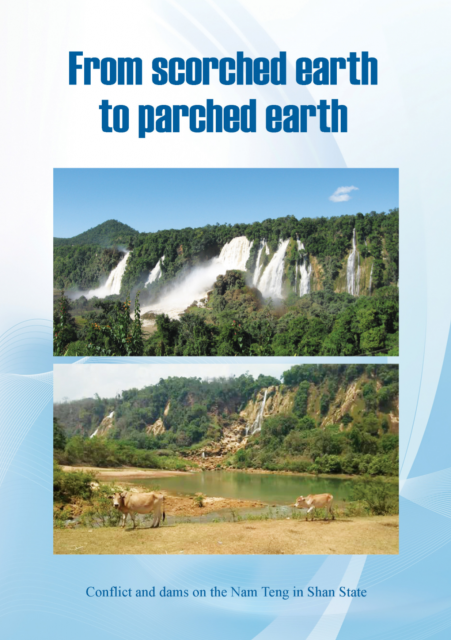From Scorched Earth to Parched Earth

Summary
This report exposes how Burma Army terror campaigns, forced depopulation, and military expansion have paved the way for dam building on the Nam Teng in southern Shan State, and urges the immediate cancellation of the Upper Kengtawng dam, a potentially disastrous project that will inflame the decades-long civil war.
The Nam Teng, one of the main Salween tributaries in Shan State, has special historical and cultural significance for Shan people. It flows through the former Shan principalities of Mong Kung, Laikha, Mong Nai and Mawkmai, and ancient Shan stupas line its banks. The bestloved Shan folktale – Khun Sarm Law and Nang Oo Pim – is set along the river. Kengtawng, in eastern Mong Nai, halfway along the river, is famous as Khun Sarm Law’s birthplace, and for its large, spectacular waterfalls.
The river has served as an artery of the Shan resistance for decades, linking territories along the Thai border to central Shan State. The Restoration Council of Shan State/Shan State Army (RCSS/SSA) regrouped along the Nam Teng in early 1996, after Khun Sa’s Mong Tai Army surrendered.
Communities along the Nam Teng were thus primary targets for the Burma Army’s massive scorched earth campaign against the newly reformed Shan resistance during 1996-1998. Over 300,000 villagers from eleven townships were forced from rural areas into relocation sites near towns and main roads. Hundreds were tortured, killed and raped. In Kengtawng alone, troops raped 70 women and girls, including as young as five years old.
The depopulation of rural central Shan State paved the way for largescale Burma Army expansion into the area – including the setting up of the Eastern Central Regional Command in Namzarng. It also paved the way for dam building.
Download this report in English HERE.
Download this report in Burmese HERE.

